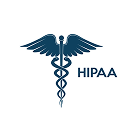
According to Forbes, 96% of customers will leave you for bad service.
With such a huge risk, ensuring top-notch call quality is more important than ever.
Picture this: You’re in a crucial phone meeting, but poor call quality makes it hard to hear, causing frustration and threatening a key business opportunity.
That’s where the Call Quality Score (CQS) comes into play, helping you measure and improve how well your customer interactions stand out.
In this article, we’ll share 8 essential tips to boost your call quality score in 2024 and for better service and retention.
Key Takeaways
- The call quality score measures how well a phone call is conducted based on factors like call handling time, resolution efficiency, and customer support agents’ attitude.
- A high score indicates smooth, effective calls, while a low score highlights that there are areas for improvement. This metric is crucial for evaluating and improving customer service performance.
- To boost your call quality score, implement strategies like defining clear quality standards, investing in QA software, and using call recordings for training.
What Exactly Is the Call Quality Score?
The Call Quality Score is a metric used to evaluate the overall effectiveness and clarity of phone or VoIP calls, helping to identify and address issues affecting communication quality.
The factors or KPIs that companies use to measure it vary, but some common ones include:
- Call Resolution Rate: The percentage of calls resolved on the first contact. A high rate indicates that agents are effectively addressing problems without the need for follow-ups.
- Customer Satisfaction Score (CSAT): A measure of customer satisfaction typically gathered through post-call surveys. Higher CSAT scores indicate that customers are pleased with the service provided.
- Average Handle Time (AHT): The average call duration, including talk time and after-call work. An optimal AHT suggests that calls are handled efficiently, balancing thoroughness with speed.
- First Call Resolution (FCR): The percentage of issues resolved during the initial call without follow-up. A high FCR rate is a positive sign of effective problem-solving during the first contact.
- Call Abandonment Rate: The percentage of calls terminated by the customer before speaking to an agent. A lower rate suggests that the company is effectively managing call queues and reducing wait times.
These factors are evaluated on a scale (such as 1 to 5 or 1 to 10) and used to assess the overall performance of representatives and customer service.
High Call Quality Score means that you handle calls efficiently, resolve customer issues effectively, and your customers are generally satisfied with the service. This score helps you identify strengths in your service processes and areas where improvements are needed. For instance, if you find a low score, you might investigate issues such as long wait times or frequent call escalations and implement training or process changes to address these problems. By continuously monitoring and improving your Call Quality Score, you can enhance the overall customer service experience and boost your operational efficiency.
Start calling with a complimentary virtual phone number for 14 days free!
8 Key Tips on How to Improve Call Quality Score
Improving call quality can make a big difference in customer satisfaction and efficiency, as it reduces misunderstandings and repeat calls.
Here are 8 practical tips to help elevate your call quality score and ensure clearer and more effective conversations.
#1 Define Clear Quality Standards
Establish specific quality standards that align with your company’s goals and customer expectations. This includes defining key performance indicators (KPIs) such as Customer Satisfaction Score (CSAT), First Call Resolution (FCR), and Average Handle Time (AHT).
Clearly communicate these standards to all agents and QA professionals to ensure a consistent understanding of performance expectations across the team.
2 Assign Responsibilities
Assigning quality assurance (QA) responsibilities to a team member ensures adherence to the QA process and fosters accountability.
Agents are more likely to take ownership of their performance when understanding their roles and expectations. Here’s how you can effectively allocate responsibilities:
- Assign a QA Lead: Designate a specific individual or team to oversee the QA process, implement QA strategies, monitor performance, and provide feedback to agents.
- Define roles and responsibilities: Clearly outline the roles and responsibilities of each team member involved in QA, including agents, supervisors, and QA analysts. For example, agents should adhere to quality standards, while supervisors focus on coaching and feedback based on QA evaluations.
- Implement regular feedback and coaching: Schedule consistent feedback and coaching sessions, focusing on strengths and areas for improvement. Encourage self-assessment to promote reflection and motivation.
- Focus on low performers: Identify low-performing agents and implement targeted measures, such as specific training programs, to address their weaknesses.
- Review responsibilities periodically: Assess the effectiveness of assigned responsibilities and make adjustments as necessary.
#3 Monitor All Customer Support Channels
Monitoring all customer support channels is key to improving call quality scores. It gives you a complete view of interactions, helps keep service consistent, and quickly identifies areas that need improvement.
Here’s how you can monitor all customer support channels:
- Conduct comprehensive monitoring: Monitor all channels (phone, email, chat, SMS) using real-time tools to detect issues and analyze data.
- Use AI-powered quality monitoring tools: Use artificial intelligence tools to automate call quality scoring and analysis across channels. These tools can provide data-backed insights to improve customer service quality.
#4 Share Data with Your Team
Sharing real-time analysis with your team is crucial for improving call quality scores. It allows for immediate performance adjustments and helps identify issues.
In addition, it ensures agents receive timely feedback and can correct mistakes before they become patterns, improving overall service quality.
Here’s how you can share real-time analysis:
- Use QA tools: Invest in software that allows real-time monitoring to provide quick feedback to agents.
- Display live statistics: Make performance metrics visible so agents can see their performance and be motivated to improve.
- Encourage team collaboration: Promote a culture of sharing best practices and learning from each other to improve together.
#5 Invest in Quality Assurance Software
Investing in QA software is crucial because it automatically monitors calls and provides instant feedback, helping agents to perform better and boosts customer satisfaction.
Follow these steps to choose QA software wisely:
- Define your needs: Determine what you want to achieve with the software, such as improving customer satisfaction or first-call resolution.
- Choose a comprehensive software: Look for features like call recording, real-time analysis, and performance reporting.
- Ensure that it supports integrations: Ensure the software integrates well with your existing systems to avoid issues.
- Involve your team: Get input from agents and supervisors to select the best software and ensure effective use.
#6 Use Call Recordings for Training
Using call recordings for training is crucial as it allows agents to review and learn from their conversations, identifying errors and areas for improvement. This way, concrete examples can be used for skill development and improving call quality scores.
Follow these best practices to make the most of call recordings:
- Review situations with positive and negative outcomes: Use recordings to show good performance and common mistakes. Analyzing successful cases helps agents understand what works well and learn from mistakes, improving their skills and providing better service.
- Schedule regular training sessions: Use recordings in periodic training sessions to keep agents updated and continuously improve their skills.
#7 Motivate Your Agents
Motivating your agents is crucial as it encourages them to improve their performance and maintain high-quality standards in each call. Rewards and recognition foster a culture of excellence and commitment, improving quality scores and customer satisfaction.
Here are some tips on how to incentivize agents:
- Set clear rewards: Offer incentives like bonuses, prizes, or public recognition for meeting quality goals. Ensure criteria are clear and achievable to motivate agents.
- Provide positive feedback: Celebrate agents’ achievements and improvements with praise and positive comments. Recognizing good performance reinforces positive behavior and motivates agents to continue striving.
- Offer development opportunities: Provide access to training and career growth opportunities. When agents see a clear path for advancement, they are more focused and committed to improving their performance.
- Implement friendly competitions: Create challenges based on quality metrics, such as customer satisfaction. This encourages healthy competition and motivates agents to exceed their own and others’ goals.
#8 Request Customer Feedback
service, leading to better call quality scores.
This is how you can get customer feedback effectively:
- Use post-call surveys: Send brief and specific surveys after each call to capture the customer’s immediate impression of service quality. Ensure surveys are easy to complete and have straightforward questions.
- Analyze feedback regularly: Review and analyze survey responses to identify patterns and common areas of dissatisfaction. Use this data to adjust processes and train agents in necessary areas.
- Offer incentives for feedback: Encourage customers to provide their opinions by offering small incentives, such as discounts or joining a giveaway. This can increase response rates and give a better picture of how customers actually experience the service.
Once you’ve gathered the feedback, act on it. Implement changes based on what customers have said and hare these updates with your team. Showing that feedback leads to real improvements highlights its importance to both customers and agents.
Discover why call quality is essential at CloudTalk.
The importance of a good call quality score
If you’ve made it this far, you’ve probably already realized that a quality score is essential.
But apart from that, why is it so important?
Here are some examples:
- Understand how well your customer service calls are handled: By thoroughly evaluating interactions, you can enhance the customer experience and increase the chances of customers speaking positively about your contact center.
- Get clear guidance: Scorecards help you understand best practices, and supervisors can use individual scores to offer tailored coaching and support
- Reduce customer complaints: Scorecards can uncover underlying issues and help you refine policies, products, or service delivery.
- Track your performance and target your training: Regular feedback is crucial for boosting your performance and building a robust and effective team.
Unlock a Better Call Quality Score with Cloudtalk
By following these 8 tips, including setting clear standards, using QA software, and motivating your agents, you can improve your call handling and boost customer satisfaction.
Want to elevate your call quality score? Boost it with CloudTalk’s real-time monitoring and instant statistics. Request a demo today and improve customer satisfaction!
Take CloudTalk’s AI capabilities for a spin!

















